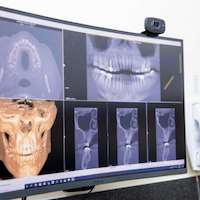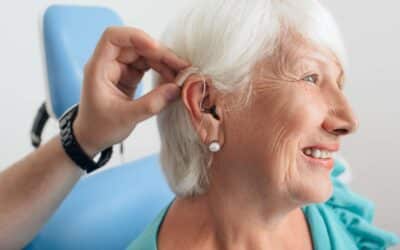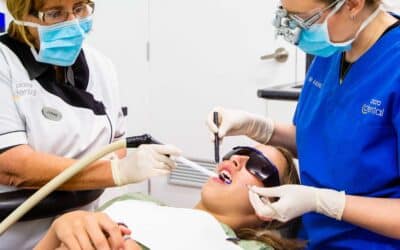Next Generation Biohybrid Tooth Implants

The idea of merging man with machine was just a fictional concept in 1872 when English novelist Samuel Butler anonymously published Erewhon. It was the first literary exploration of the dangerous ideas of conscious machines, and their ability to self-replicate. It emerged at the time of Darwin’s Origin of the Species ramming right into the Industrial Revolution. His satire tells of the stripping of utopia, and it was written less than a decade after four years as a runholder on the South Island of New Zealand.
With the title an anagram of ‘nowhere’ and inspired by the stunning green landscapes and mountains he’d experienced, Butler’s description of the place of Erewhon is as a world reflecting the hypocrisies of the Victorian era. In this new society machines are banned, disease is declared a crime and crime declared a disease.
So those that ail go to jail, and criminals straight to triage.
Butler’s novel blurs all that defines what is nature, what is human and what is machine with astonishing prescience; an evolving relationship between mankind and technology and the peril that brings. In the telling of Erewhon is the previous time when the whole of human existence was under threat, so advanced did machines become.
A mere six generations later, that long-awaited goal of mimicking nature has found fertile ground in our ability to create biologically merged technology.
From 1973 to 1978 the action tv series The Six Million Dollar Man had injured astronaut Steve Austin show the world how two bionic legs, a bionic arm and a bionic eye could achieve strength, speed and vision far beyond human capability.
With that six million US dollars now equivalent to about $US28 billion, it’s not surprising that AI and biohybrid robots not only exist, but are quickly advancing beyond the original fantasies of ‘thinking computers’ and human replacement parts.
Typically, neurons are the biological component used to leverage and expand the inherent limitations of artificial devices.
It’s how intelligence transfers to technology, and a striking example of the near-future ability to deal with human disease by simply replacing body parts with biologically superior engineering.
Unprecedented computational power is currently believed possible with ‘neuronic computers’ that use neurons instead of transistors.
Amid all this expectancy remains the particularly intriguing paradox of man against machine, man with machine, man becoming machine and machine becoming man. It brings unstoppable biological and technological manoeuvres, collusions and delusions with it – most likely to be sorted by AI.
It’s uncomfortable.
Augustus Ada Lovelace (1815-1859), daughter of Lord and Lady Byron and considered the world’s first computer programmer – her concept of the ‘Analytical Engine’ was evocatively predictive. She said of the machine that it, “… has no pretensions whatever to originate anything. It can do whatever we know how to order it to perform. It can follow analysis; but it has no power of anticipating any analytical relations or truths. Its province is to assist us to making available what we are already acquainted with.”
As humans we are yet to resolve the progressively provocative and increasingly changing ideology that neurons think, and machines do. The exponential evolution of intelligent biohybrid technologies gives this enigma its own gravitational pull and we’re still not all that sure where we’re standing. So rapidly are we changing our perspective and understanding of ourselves as biological organisms we’ve reached a point in our history where machines think because neurons do.
For an entity to be considered biohybrid it must comprise at least one engineered or artificial component in combination with a biological one. In this burgeoning era of biomimetics and biocompatible technologies we currently already have microscale mobile computing, prosthetics and implants.
Biomimetics is the distillation of biological systems, developed into technologies that are constructed with a shared fundamentality in order to mimic life. These two fields require vast understandings of the complexities of living systems. We have already advanced to microorganism-bots, sperm-bots, cyborgs, and tissue-based robots. New robotics has living muscle adaptations, sensory perception, and the computational abilities of living brain cells.
Move over Steve Austin – you were better, stronger, faster before this imminent future of autonomous living machines. After having lost both legs, and arm and an eye, losing a tooth or two is on the cards. Steve’s dentist would no doubt recommend a biohybrid implant.
In 2009, cell biologist Takashi Tsuji PhD, currently at the Laboratory for Organ Regeneration in Japan, focused on the embryonic germ tissues that develop into teeth. His team grew the bioengineered germ cells in a special culture for a few days, before transplanting them into the extracted molar sites of adult mice.

After only five weeks new teeth erupted through the gums.
Within 49 days, proper size with opposing teeth alignment had been achieved. Efficient chewing gave all indications that the teeth were completely functional.
Tooth roots, inner pulp, and enamel all developed like normal teeth. It was the first to demonstration of biohybrid organ germs fully developing.
What Tsuji’s team gave us more than a decade ago was the ability to bioengineer periodontal ligaments to secure teeth to supporting bone, as well as nerve fibres. It meant that for the first time, chewing pressure sensitivity and other jaw stresses were now possible for tooth implants to gauge.
Since that time, Takashi Tsuji in collaboration with several Japanese institutions, have developed a bio-hybrid dental implant that restores physiological tooth function, by using a conventional dental implant with dental follicle stem cells as a biohybrid organ.
It’s an implant that responds not only to mechanical stress, but can also perceive noxious stimuli. If that’s not futuristic enough it also regenerating jawbone and critical bone-defects.
In restoring tooth loss with dental implants, some studies have reported forming periodontal tissue with periodontal ligament stem cells. However, a fibrous connected implant from embryonic dental follicle stem cells has successfully demonstrated an unassailability in next generation biohybrid dental implant therapies.
1973’s opening theme for the fictional Six Million Dollar Man stated, “Gentlemen, we can rebuild him. We have the technology.” 2023 says that indeed, we certainly do. We’re up to our back teeth in it.
The content has been made available for informational and educational purposes only. Plaza Dental does not make any representation or warranties with respect to the accuracy, applicability, fitness, or completeness of the content.
The content is not intended to be a substitute for professional personal diagnosis or treatment. Always seek the advice of your dentist or another qualified health provider with any questions you may have regarding a dental or medical condition. Never disregard professional advice or delay seeking it because of something you have read or seen on the Site.
Services we mentioned:
Related Articles
Dental Implant Hearing Aids
It’s a study published in the Journal of the Acoustical Society of America rather than the Journal of the American...
Can Having Bad Oral Health Affect An Entire Country?
Can Having Bad Oral Health Affect An Entire Country? If it does, it sure makes ignoring and neglecting our oral health...








